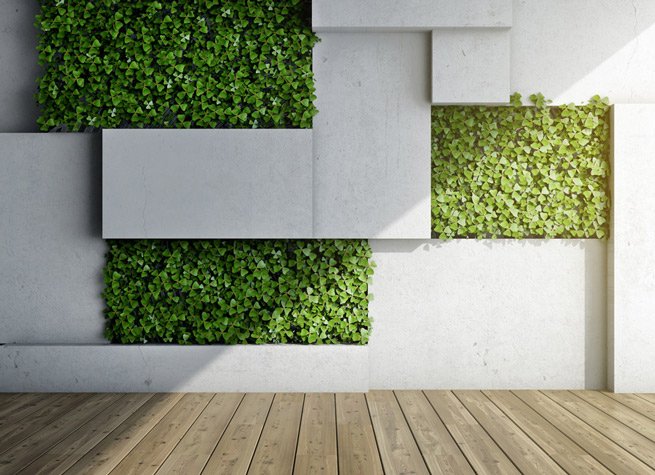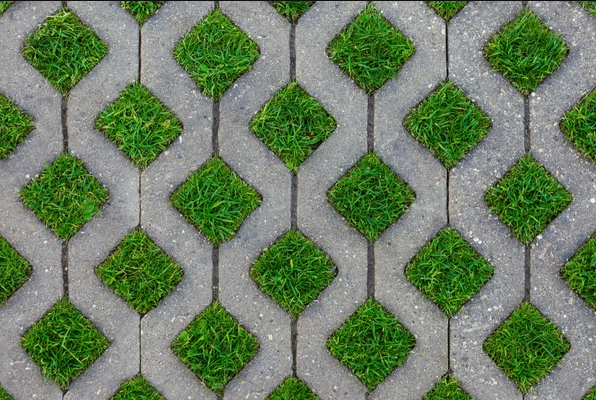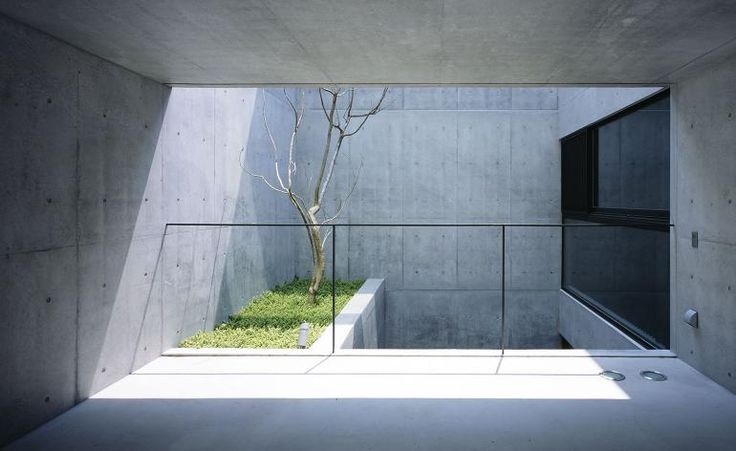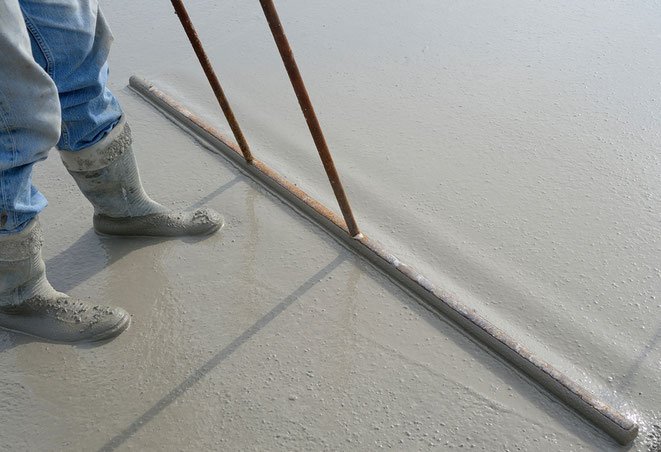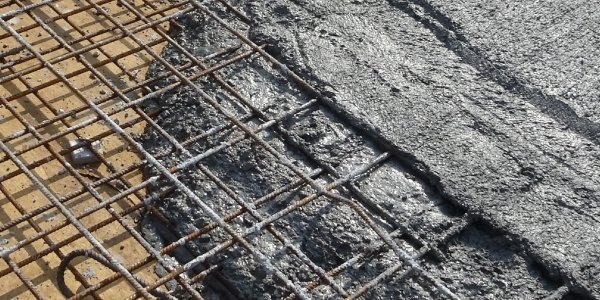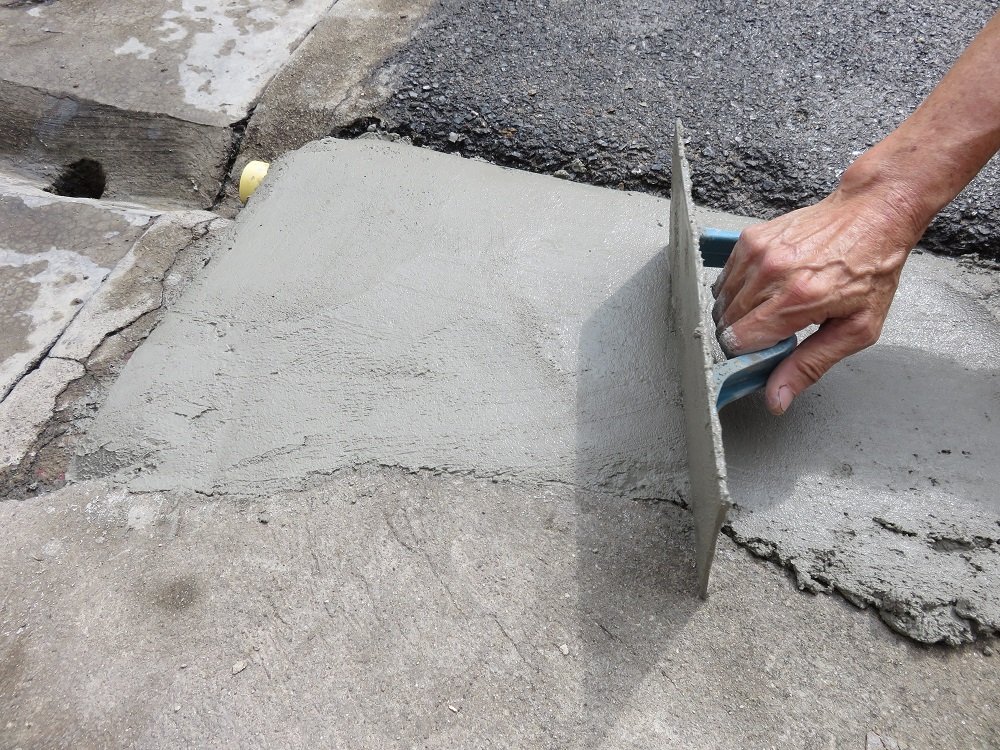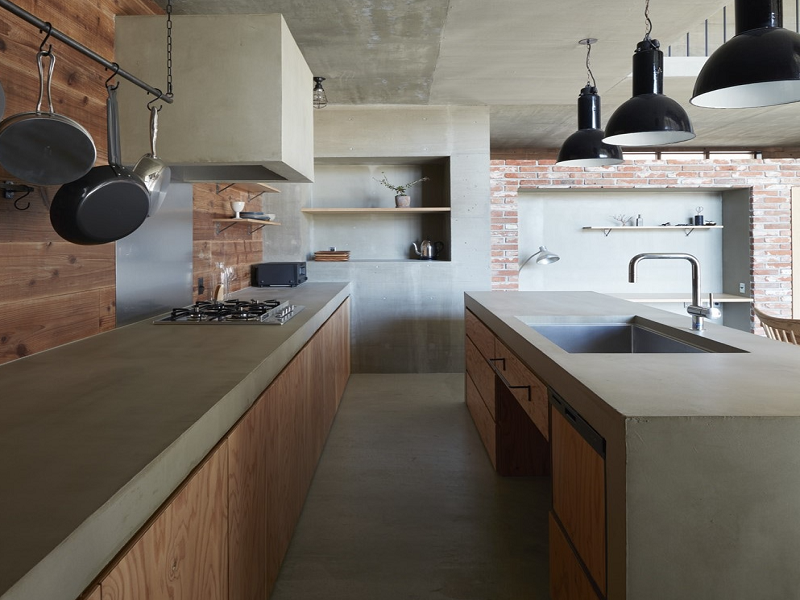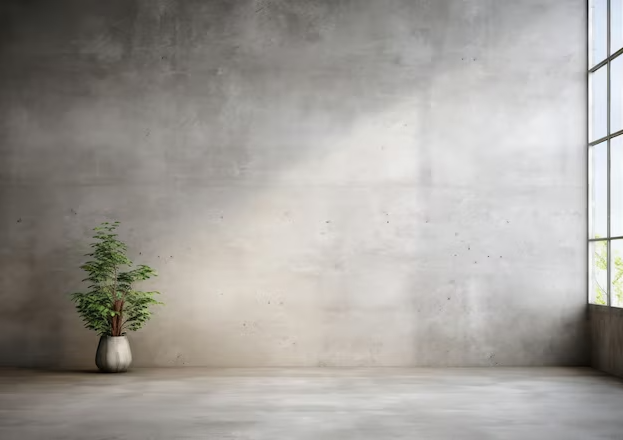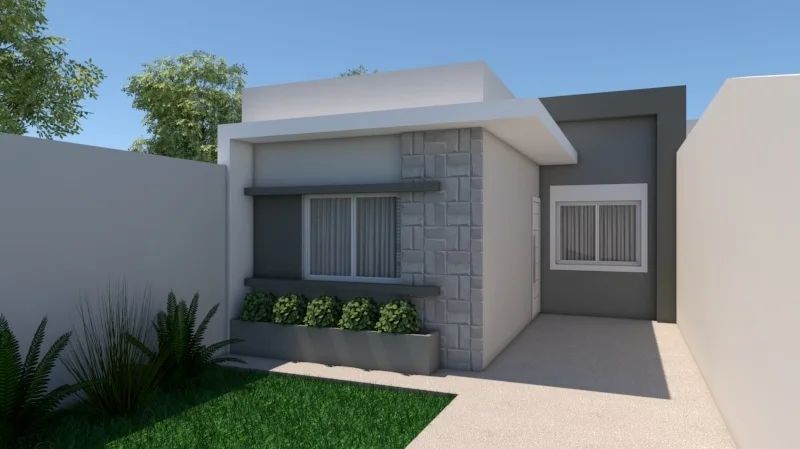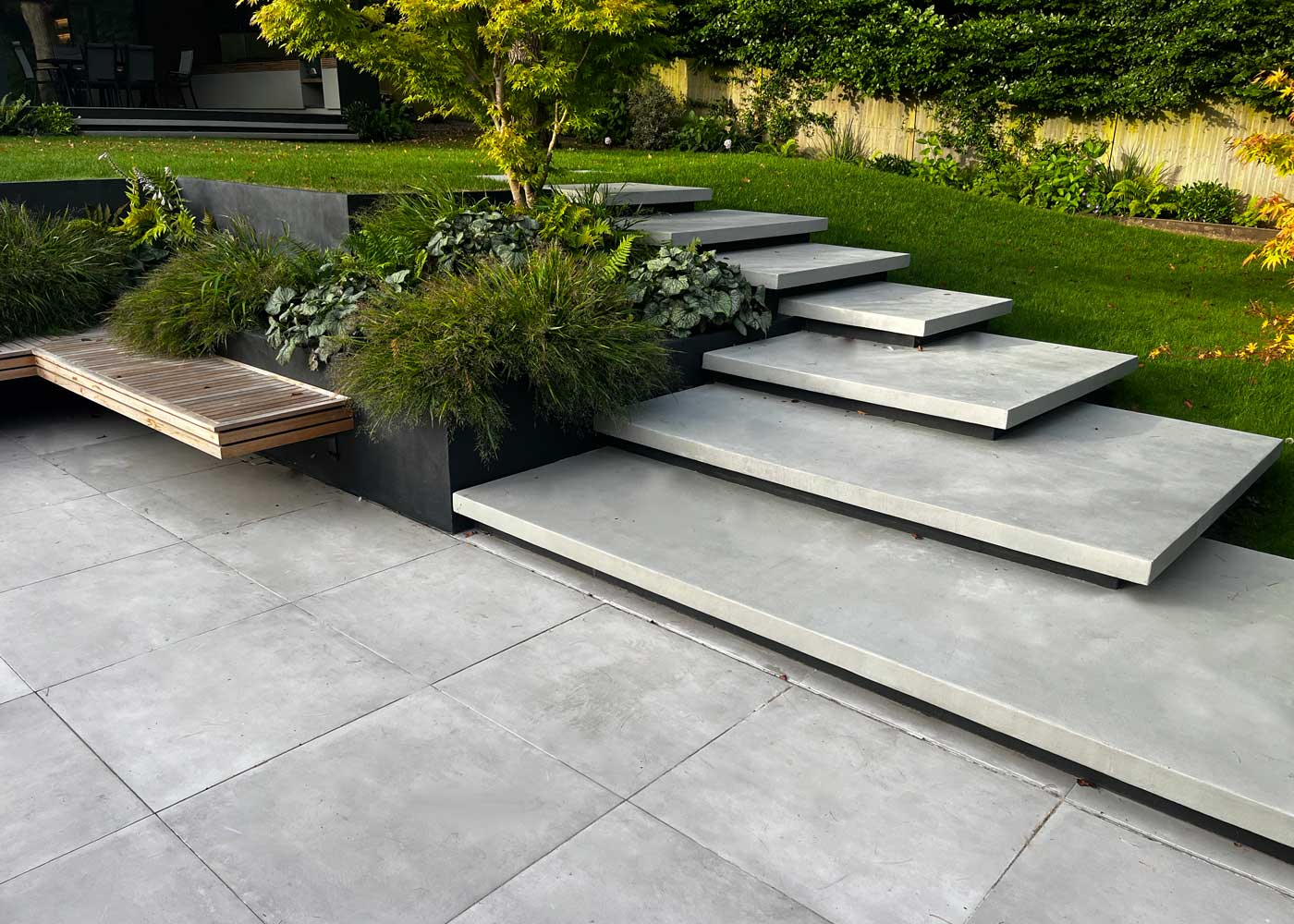Designing Concrete Vertical Gardens: Merging Nature with Urban Architecture Concrete vertical gardens are an innovative way to integrate nature into the urban environment, utilizing vertical space to create green oases amidst the concrete jungle. In this article, we will explore how to design and construct concrete vertical gardens to merge nature with urban architecture. Selection of Suitable Plants The first step in designing a concrete vertical garden is to select plants suitable for the environment. Choose plants that are resilient, low-maintenance, and capable of growing in vertical conditions, such as ferns, succulents, and climbing plants. Space Design and Planning Before construction begins, it’s important to design and plan the vertical garden space. This includes determining the location, size, and layout of the concrete structures, as well as the distribution of plants to create a visually appealing and functional design. Construction of Concrete Structure Once the design is complete, the construction of the concrete structure can proceed. This may involve installing prefabricated concrete panels or creating concrete structures on-site, depending on the project’s needs and preferences. Substrate Preparation and Planting After completing the concrete structure, prepare the substrate for planting. Use a lightweight, well-draining substrate, ideally designed specifically for vertical gardens. Once the substrate is prepared, plants can be planted according to the previously established design. Automated Irrigation System Concrete vertical gardens require an appropriate irrigation system to ensure that plants receive the right amount of water. Automated irrigation systems can be installed to distribute water evenly and efficiently along the vertical structure. Regular Maintenance To ensure the health and growth of plants, regular maintenance of the vertical garden is important. This may include pruning plants, controlling pests and diseases, and fertilizing as needed to promote healthy growth. Environmental and Aesthetic Benefits Concrete vertical gardens not only provide environmental benefits by improving air quality and reducing pollution but also add beauty and vitality to urban spaces. Their presence can enhance the emotional and mental well-being of city residents and visitors. Conclusion: Concrete vertical gardens offer an innovative and sustainable way to integrate nature into densely populated urban environments. By merging architecture with vegetation, these gardens create green spaces that are not only aesthetically pleasing but also beneficial for the environment and the quality of life of those who enjoy them. Recents post concrete work sustainable Green Concrete Construction: Reducing the Environmental Impact of Your Projects #2 However, the quest for innovation in concrete infrastructure has taken center stage, bridging the gap between traditional methods and groundbreaking… Read More Green Concrete Construction: Reducing the Environmental Impact of Your Projects However, the quest for innovation in concrete infrastructure has taken center stage, bridging the gap between traditional methods and groundbreaking… Read More How to Incorporate Concrete Elements into a Minimalist Design: Practical Tips However, the quest for innovation in concrete infrastructure has taken center stage, bridging the gap between traditional methods and groundbreaking… Read More Benefits of Self-Leveling Concrete: Facilitating Installation on Uneven Surfaces However, the quest for innovation in concrete infrastructure has taken center stage, bridging the gap between traditional methods and groundbreaking… Read More How to Choose the Right Type of Concrete for Your Project: A Complete Guide However, the quest for innovation in concrete infrastructure has taken center stage, bridging the gap between traditional methods and groundbreaking… Read More 7 Keys for Effective Concrete Maintenance at Home However, the quest for innovation in concrete infrastructure has taken center stage, bridging the gap between traditional methods and groundbreaking… Read More Load More End of Content.
Green Concrete Construction: Reducing the Environmental Impact of Your Projects
Green Concrete Construction: Reducing the Environmental Impact of Your Projects In an increasingly environmentally conscious world, sustainable construction has become a priority for many projects. Green concrete, a more eco-friendly alternative to conventional concrete, is gaining popularity due to its environmental benefits. In this article, we will explore how construction with green concrete can help reduce the environmental impact of your construction projects. Sustainable Materials Green concrete is produced using sustainable materials such as recycled aggregates, fly ash, and blast furnace slag. These materials help reduce the demand for natural resources and minimize the environmental impact associated with the extraction and processing of raw materials. Carbon Emissions Reduction The production of conventional concrete is one of the major sources of carbon emissions in the construction industry. Green concrete uses more efficient production techniques and lower environmental impact materials, helping to reduce carbon emissions associated with construction. Increased Durability and Longevity Green concrete tends to be more durable and resilient than conventional concrete, meaning it requires less maintenance and repairs over its lifespan. This reduces the amount of materials and energy needed to maintain and replace concrete structures, contributing to more sustainable construction. Improvement of Energy Efficiency Green concrete can help improve the energy efficiency of buildings by providing greater thermal mass and thermal stability. This helps regulate indoor temperatures, reducing the need for heating and cooling and, in turn, energy consumption. Waste Management and Recycling During construction with green concrete, waste management and recycling practices can be implemented to further reduce environmental impact. Concrete waste can be crushed and recycled as aggregates for new concrete batches, minimizing the amount of waste sent to landfills. Certifications and Regulations There are several certifications and regulations that promote and support construction with green concrete, such as LEED (Leadership in Energy and Environmental Design) and the eco-friendly materials rating system. Compliance with these regulations can help projects gain recognition and reputation for their commitment to sustainability. Education and Awareness Finally, construction with green concrete also involves educating and raising awareness among all parties involved in the project, from architects and engineers to contractors and owners. Promoting a culture of sustainable construction can inspire positive changes throughout the construction industry. Conclusion: Construction with green concrete offers a number of significant benefits for the environment and society as a whole. By adopting more sustainable construction practices and using lower environmental impact materials, we can reduce the negative impact of construction on the environment and work towards a more sustainable and planet-friendly future. Recents post concrete work sustainable How to Incorporate Concrete Elements into a Minimalist Design: Practical Tips #2 However, the quest for innovation in concrete infrastructure has taken center stage, bridging the gap between traditional methods and groundbreaking… Read More How to Incorporate Concrete Elements into a Minimalist Design: Practical Tips However, the quest for innovation in concrete infrastructure has taken center stage, bridging the gap between traditional methods and groundbreaking… Read More Benefits of Self-Leveling Concrete: Facilitating Installation on Uneven Surfaces However, the quest for innovation in concrete infrastructure has taken center stage, bridging the gap between traditional methods and groundbreaking… Read More How to Choose the Right Type of Concrete for Your Project: A Complete Guide However, the quest for innovation in concrete infrastructure has taken center stage, bridging the gap between traditional methods and groundbreaking… Read More 7 Keys for Effective Concrete Maintenance at Home However, the quest for innovation in concrete infrastructure has taken center stage, bridging the gap between traditional methods and groundbreaking… Read More Concrete in the Kitchen: Simple Steps to Create a Durable and Stylish Countertop However, the quest for innovation in concrete infrastructure has taken center stage, bridging the gap between traditional methods and groundbreaking… Read More Load More End of Content.
How to Incorporate Concrete Elements into a Minimalist Design: Practical Tips
How to Incorporate Concrete Elements into a Minimalist Design: Practical Tips Minimalist design is a popular trend in architecture and interior design characterized by simplicity, cleanliness, and functionality. Concrete, with its industrial aesthetic and versatility, lends itself perfectly to this style. In this article, we will explore how you can incorporate concrete elements into a minimalist design with some practical tips. Finish Selection When incorporating concrete into a minimalist design, it’s important to choose finishes that complement the clean and simple aesthetic of the style. Opt for smooth and polished surfaces that reflect light and create a sense of spaciousness in the space. Clean Lines Design Minimalist design relies on clean lines and simple shapes. When incorporating concrete elements, look for pieces with simple geometric shapes and straight lines that seamlessly integrate into the overall design of the space. Strategic Use of Color While concrete is known for its neutral gray tone, you can strategically play with color to add visual interest to the space. Consider adding pigments or dyes to the concrete to create subtle tones that complement the color palette of the minimalist design. Natural Textures Concrete can offer a variety of textures, from smooth surfaces to rough or textured finishes. Experiment with different textures to add depth and dimension to the design without compromising the simplicity of the minimalist style. Integration of Functional Elements In a minimalist design, each element should have a specific function and contribute to the overall functionality of the space. When incorporating concrete elements, ensure that they also serve a practical function, such as built-in shelves, integrated benches, or kitchen countertops. Proper Lighting Lighting plays a crucial role in minimalist design as it can highlight key elements and create cozy atmospheres. Consider using recessed lighting or pendant fixtures to highlight concrete elements and create interesting visual effects in the space. Maintenance and Care Finally, it’s important to consider the maintenance and care of concrete elements in a minimalist design. Ensure that concrete surfaces are properly sealed and protected to prevent stains and damage, and follow a regular cleaning and maintenance regimen to keep the design looking impeccable. Conclusion: Incorporating concrete elements into a minimalist design can add a touch of modernity and sophistication to the space while maintaining the characteristic simplicity and functionality of the style. With these practical tips, you can create a minimalist and elegant environment that highlights the beauty and versatility of concrete in interior design. Recents post concrete work sustainable Benefits of Self-Leveling Concrete: Facilitating Installation on Uneven Surfaces #2 However, the quest for innovation in concrete infrastructure has taken center stage, bridging the gap between traditional methods and groundbreaking… Read More Benefits of Self-Leveling Concrete: Facilitating Installation on Uneven Surfaces However, the quest for innovation in concrete infrastructure has taken center stage, bridging the gap between traditional methods and groundbreaking… Read More How to Choose the Right Type of Concrete for Your Project: A Complete Guide However, the quest for innovation in concrete infrastructure has taken center stage, bridging the gap between traditional methods and groundbreaking… Read More 7 Keys for Effective Concrete Maintenance at Home However, the quest for innovation in concrete infrastructure has taken center stage, bridging the gap between traditional methods and groundbreaking… Read More Concrete in the Kitchen: Simple Steps to Create a Durable and Stylish Countertop However, the quest for innovation in concrete infrastructure has taken center stage, bridging the gap between traditional methods and groundbreaking… Read More Lighting up with Concrete: Strategies to Harness Natural Light Indoors However, the quest for innovation in concrete infrastructure has taken center stage, bridging the gap between traditional methods and groundbreaking… Read More Load More End of Content.
Benefits of Self-Leveling Concrete: Facilitating Installation on Uneven Surfaces
Benefits of Self-Leveling Concrete: Facilitating Installation on Uneven Surfaces Self-leveling concrete is a popular choice in construction due to its ability to automatically level itself and provide a flat and uniform surface. In this article, we will explore the numerous benefits of using self-leveling concrete in construction projects, especially on uneven surfaces. Automatic Leveling One of the main advantages of self-leveling concrete is its ability to automatically level itself. This eliminates the need for manually leveling the surface, saving time and labor during installation. Improved Flatness Self-leveling concrete provides an extremely flat and uniform surface, which is ideal for applications requiring a solid and leveled base. This ensures even distribution of loads and an aesthetically pleasing appearance. Ease of Installation Compared to other types of concrete, self-leveling concrete is easier to install. It is simply poured onto the surface and spread evenly, eliminating the need for specialized tools or complicated techniques. Waste Reduction Due to its ability to level and spread evenly, self-leveling concrete helps reduce waste during installation. This can result in significant savings in material and labor costs. Application Versatility Self-leveling concrete can be used in a wide variety of applications, including commercial and industrial floors, exterior pavements, and repairs of uneven surfaces. Its versatility makes it ideal for a variety of construction projects. Quick Curing Time Self-leveling concrete generally has faster curing times compared to other types of concrete. This means that treated areas can be made available for use more quickly, speeding up the construction process. Improved Finishing Quality Due to its ability to level itself and provide a smooth and uniform surface, self-leveling concrete improves the quality of the final finish. This results in a more attractive and professional appearance for the project. Conclusion: Self-leveling concrete offers a number of significant benefits that make it an attractive option for a variety of construction projects. Its ability to automatically level itself, improve flatness, facilitate installation, and offer quick curing times make it ideal for uneven surfaces and other applications where a solid and uniform base is required. Recents post concrete work sustainable How to Choose the Right Type of Concrete for Your Project: A Complete Guide #2 However, the quest for innovation in concrete infrastructure has taken center stage, bridging the gap between traditional methods and groundbreaking… Read More How to Choose the Right Type of Concrete for Your Project: A Complete Guide However, the quest for innovation in concrete infrastructure has taken center stage, bridging the gap between traditional methods and groundbreaking… Read More 7 Keys for Effective Concrete Maintenance at Home However, the quest for innovation in concrete infrastructure has taken center stage, bridging the gap between traditional methods and groundbreaking… Read More Concrete in the Kitchen: Simple Steps to Create a Durable and Stylish Countertop However, the quest for innovation in concrete infrastructure has taken center stage, bridging the gap between traditional methods and groundbreaking… Read More Lighting up with Concrete: Strategies to Harness Natural Light Indoors However, the quest for innovation in concrete infrastructure has taken center stage, bridging the gap between traditional methods and groundbreaking… Read More Building Comfort: Tips for Integrating Concrete in a Cozy Home However, the quest for innovation in concrete infrastructure has taken center stage, bridging the gap between traditional methods and groundbreaking… Read More Load More End of Content.
How to Choose the Right Type of Concrete for Your Project: A Complete Guide
How to Choose the Right Type of Concrete for Your Project: A Complete Guide Selecting the appropriate type of concrete is crucial for the success of any construction or renovation project. With a wide variety of options available, from ready-mix concrete to self-leveling concrete, it can be overwhelming to choose the most suitable one. In this complete guide, we will explore the key factors to consider when choosing the type of concrete for your project. Understanding Your Needs The first step in choosing the right type of concrete is understanding the specific needs of your project. Will it be used indoors or outdoors? Is additional strength required? What kind of finish are you looking for? These questions will help determine which features are most important to you. Project Type The type of project you are undertaking will influence the type of concrete you need. For example, a paving project will require different concrete than that used in constructing a slab for a garage. It’s important to select concrete that suits the specific demands of your project. Strength and Durability The strength and durability of the concrete are crucial factors to consider, especially if it will be used in heavy-duty applications or outdoor environments. Refer to manufacturer specifications to determine the compressive strength and durability of the concrete you are considering. Manageability and Workability The ease of handling and workability of the concrete are also important, especially if you are doing the work yourself or hiring a construction team. Choose concrete that is easy to mix, pour, and manipulate to ensure a smooth construction process. Finish and Appearance The finish and appearance of the concrete are important aesthetic aspects to consider, especially if it will be used indoors or in visible areas. There are a variety of options available, from polished concrete to stamped concrete, each with its own unique look. Environmental Considerations It’s also important to consider the environmental impact of the concrete you are using. Look for options that are environmentally friendly and minimize the use of natural resources and greenhouse gas emissions during production. Consultation with a Professional If you are dealing with a complex project or are unsure which type of concrete is best for your needs, don’t hesitate to consult with a construction professional. They can provide expert guidance and personalized recommendations for your specific project. Conclusion: Choosing the right type of concrete is essential for the success of any construction or renovation project. By carefully considering your needs, project type, strength and durability, manageability and workability, finish and appearance, environmental considerations, and consulting with a professional, you can make an informed decision that ensures optimal results for your project. Recents post concrete work sustainable 7 Keys for Effective Concrete Maintenance at Home #2 However, the quest for innovation in concrete infrastructure has taken center stage, bridging the gap between traditional methods and groundbreaking… Read More 7 Keys for Effective Concrete Maintenance at Home However, the quest for innovation in concrete infrastructure has taken center stage, bridging the gap between traditional methods and groundbreaking… Read More Concrete in the Kitchen: Simple Steps to Create a Durable and Stylish Countertop However, the quest for innovation in concrete infrastructure has taken center stage, bridging the gap between traditional methods and groundbreaking… Read More Lighting up with Concrete: Strategies to Harness Natural Light Indoors However, the quest for innovation in concrete infrastructure has taken center stage, bridging the gap between traditional methods and groundbreaking… Read More Building Comfort: Tips for Integrating Concrete in a Cozy Home However, the quest for innovation in concrete infrastructure has taken center stage, bridging the gap between traditional methods and groundbreaking… Read More Concrete in the Garden: Creative Ideas to Beautify Your Outdoor Space However, the quest for innovation in concrete infrastructure has taken center stage, bridging the gap between traditional methods and groundbreaking… Read More Load More End of Content.
7 Keys for Effective Concrete Maintenance at Home
7 Keys for Effective Concrete Maintenance at Home Concrete is a durable and versatile material used in a variety of home applications, from pavements to structures. However, to ensure its longevity and maintain its aesthetic appearance, it’s crucial to perform proper maintenance. In this article, we’ll explore seven important keys for effective concrete maintenance at home. Regular Inspection:The first key to effective concrete maintenance is conducting regular inspections. This involves visually checking the condition of the concrete for cracks, stains, or other signs of deterioration. Periodic inspections can help identify problems early and take preventive measures. Deep Cleaning:Deep cleaning is essential to keep concrete in good condition. Different cleaning methods such as pressure washing or specific concrete cleaners can be used to remove dirt, stains, and residue buildup. Regular Sealing:Sealing concrete is an important measure to protect it against moisture, chemicals, and other elements that may damage it. Applying a high-quality concrete sealer regularly can help prolong its lifespan and maintain its original appearance. Timely Crack Repair:Cracks in concrete can worsen over time if not properly addressed. It’s crucial to repair them as soon as they’re detected to prevent further damage. Depending on the size and severity of the cracks, they may require different repair methods such as crack fillers or concrete patches. Weather Protection:Concrete can be affected by weather conditions, especially rain, snow, and sun exposure. To protect it against these elements, protective coatings can be applied or appropriate waterproofing methods can be used. Expansion Joint Maintenance:Expansion joints are important to allow for the expansion and contraction of concrete due to changes in temperature and humidity. It’s crucial to maintain these joints in good condition by filling or sealing them as needed to prevent crack formation. Professional Consultation:In some cases, consulting a professional may be necessary for proper concrete maintenance at home. Concrete experts can offer specific recommendations and customized solutions to keep concrete in optimal condition. Conclusion: Effective concrete maintenance at home is essential to ensure its durability and functionality over time. By following these seven keys, homeowners can protect their concrete surfaces and keep them in excellent condition for many years. Recents post concrete work sustainable Concrete in the Kitchen: Simple Steps to Create a Durable and Stylish Countertop #2 However, the quest for innovation in concrete infrastructure has taken center stage, bridging the gap between traditional methods and groundbreaking… Read More Concrete in the Kitchen: Simple Steps to Create a Durable and Stylish Countertop However, the quest for innovation in concrete infrastructure has taken center stage, bridging the gap between traditional methods and groundbreaking… Read More Lighting up with Concrete: Strategies to Harness Natural Light Indoors However, the quest for innovation in concrete infrastructure has taken center stage, bridging the gap between traditional methods and groundbreaking… Read More Building Comfort: Tips for Integrating Concrete in a Cozy Home However, the quest for innovation in concrete infrastructure has taken center stage, bridging the gap between traditional methods and groundbreaking… Read More Concrete in the Garden: Creative Ideas to Beautify Your Outdoor Space However, the quest for innovation in concrete infrastructure has taken center stage, bridging the gap between traditional methods and groundbreaking… Read More DIY with Concrete: Creative Projects to Beautify Your Home on a Budget However, the quest for innovation in concrete infrastructure has taken center stage, bridging the gap between traditional methods and groundbreaking… Read More Load More End of Content.
Concrete in the Kitchen: Simple Steps to Create a Durable and Stylish Countertop
Concrete in the Kitchen: Simple Steps to Create a Durable and Stylish Countertop The kitchen is the heart of the home, and the countertop is its centerpiece. When it comes to durability, style, and versatility, concrete countertops are a popular choice among homeowners and designers alike. In this guide, we’ll explore simple steps to create a durable and stylish concrete countertop for your kitchen. From material selection to finishing touches, let’s delve into the world of concrete and discover how it can elevate your kitchen design to new heights. Choosing the Right Concrete Mix: The first step in creating a concrete countertop is selecting the right mix. Opt for a high-quality concrete mix specifically formulated for countertops, as it offers superior strength and durability compared to standard concrete mixes. Consider factors such as aggregate size, admixtures, and color additives to achieve the desired texture, color, and finish for your countertop. Creating the Mold: Once you’ve chosen your concrete mix, it’s time to create the mold for your countertop. Use melamine or plywood to build a form that matches the dimensions and shape of your countertop. Reinforce the mold with rebar or wire mesh to add strength and prevent cracking. Seal the inside of the mold with a release agent to ensure easy removal once the concrete has cured. Pouring and Finishing the Concrete: With the mold in place, it’s time to pour the concrete. Work in small sections, starting from one end of the mold and working your way to the other. Use a trowel to spread the concrete evenly and eliminate any air pockets or voids. Once the mold is filled, use a vibrating tool or rubber mallet to ensure proper consolidation and remove any trapped air bubbles. Finish the surface with a concrete float or trowel to achieve the desired texture and smoothness. Adding Color and Texture: Enhance the visual appeal of your concrete countertop by adding color and texture. Consider using integral pigments or acid stains to create rich, vibrant hues that complement your kitchen decor. Experiment with different aggregates such as glass, stone, or metal to add texture and visual interest to the surface. Be sure to seal the countertop with a food-safe sealer to protect against stains and moisture damage. Sealing and Curing: Once the concrete has cured for at least 24 hours, carefully remove the mold and allow the countertop to continue curing for an additional 7-14 days. During this time, keep the countertop moist by covering it with plastic sheeting or damp towels to prevent cracking and ensure proper hydration. After the curing period, apply multiple coats of a high-quality concrete sealer to protect the surface from stains, heat, and scratches. Conclusion: In conclusion, concrete countertops offer a durable and stylish option for enhancing your kitchen design. By following these simple steps to choose the right mix, create the mold, pour and finish the concrete, add color and texture, and seal and cure the countertop, you can create a stunning focal point that adds beauty and functionality to your kitchen. Embrace the versatility and creativity of concrete and enjoy the timeless elegance it brings to your culinary space. Recents post concrete work sustainable Concrete in the Kitchen: Simple Steps to Create a Durable and Stylish Countertop However, the quest for innovation in concrete infrastructure has taken center stage, bridging the gap between traditional methods and groundbreaking… Read More Lighting up with Concrete: Strategies to Harness Natural Light Indoors However, the quest for innovation in concrete infrastructure has taken center stage, bridging the gap between traditional methods and groundbreaking… Read More Building Comfort: Tips for Integrating Concrete in a Cozy Home However, the quest for innovation in concrete infrastructure has taken center stage, bridging the gap between traditional methods and groundbreaking… Read More Concrete in the Garden: Creative Ideas to Beautify Your Outdoor Space However, the quest for innovation in concrete infrastructure has taken center stage, bridging the gap between traditional methods and groundbreaking… Read More DIY with Concrete: Creative Projects to Beautify Your Home on a Budget However, the quest for innovation in concrete infrastructure has taken center stage, bridging the gap between traditional methods and groundbreaking… Read More Concrete in Interior Design: Tips to Incorporate Industrial Elegance into Your Home However, the quest for innovation in concrete infrastructure has taken center stage, bridging the gap between traditional methods and groundbreaking… Read More Load More End of Content.
Lighting up with Concrete: Strategies to Harness Natural Light Indoors
Lighting up with Concrete: Strategies to Harness Natural Light Indoors Natural light is one of the most sought-after elements in interior design, as it can significantly enhance the ambiance and functionality of a space. In this guide, we’ll explore strategies to harness natural light indoors using concrete as a key element. From reflective surfaces to strategic window placements, concrete offers innovative solutions to maximize sunlight and brighten up your living spaces. Let’s dive into the world of lighting up with concrete and discover how it can transform your home into a radiant and inviting sanctuary. Reflective Concrete Surfaces: One effective strategy for maximizing natural light is to use reflective concrete surfaces throughout your home. Polished concrete floors, countertops, and walls can help bounce light around the room, creating a bright and airy atmosphere. Consider incorporating large mirrors or metallic accents to further enhance the reflective properties of concrete and amplify the impact of natural sunlight. Strategic Window Placements: Another key aspect of harnessing natural light is strategic window placements. When designing or renovating your home, consider the orientation of windows to maximize sunlight exposure throughout the day. South-facing windows tend to receive the most sunlight, while north-facing windows provide consistent, diffused light. Incorporate skylights or clerestory windows to bring in additional natural light from above, creating a sense of openness and connection to the outdoors. Translucent Concrete Elements: Translucent concrete, also known as light-transmitting concrete or Litracon, is a revolutionary material that allows light to pass through its surface. By incorporating translucent concrete elements such as countertops, partitions, or decorative panels, you can introduce natural light into interior spaces while maintaining privacy and visual interest. Experiment with different patterns and textures to create stunning visual effects that add depth and dimension to your home. Indoor Garden Atriums: Create a connection to nature and flood your home with natural light by incorporating indoor garden atriums or sunrooms. These light-filled spaces serve as green sanctuaries where you can relax and recharge while enjoying the beauty of the outdoors. Use concrete planters, benches, and pathways to integrate seamlessly with the surrounding architecture and create a cohesive indoor-outdoor experience. Smart Lighting Control Systems: Complement natural light with smart lighting control systems that adjust artificial lighting levels based on the time of day and natural light conditions. Incorporate dimmable LED fixtures and automated blinds or curtains to optimize energy efficiency and create a customizable lighting environment that adapts to your lifestyle and preferences. Conclusion: In conclusion, harnessing natural light indoors is not only beneficial for your well-being but also enhances the beauty and functionality of your home. By incorporating concrete elements such as reflective surfaces, strategic window placements, translucent panels, indoor garden atriums, and smart lighting control systems, you can create a luminous and inviting living space that celebrates the beauty of natural sunlight. Embrace the versatility and innovation of concrete in lighting up your home and enjoy the radiant warmth and comfort it brings to your everyday life. Recents post concrete work sustainable Lighting up with Concrete: Strategies to Harness Natural Light Indoors However, the quest for innovation in concrete infrastructure has taken center stage, bridging the gap between traditional methods and groundbreaking… Read More Building Comfort: Tips for Integrating Concrete in a Cozy Home However, the quest for innovation in concrete infrastructure has taken center stage, bridging the gap between traditional methods and groundbreaking… Read More Concrete in the Garden: Creative Ideas to Beautify Your Outdoor Space However, the quest for innovation in concrete infrastructure has taken center stage, bridging the gap between traditional methods and groundbreaking… Read More DIY with Concrete: Creative Projects to Beautify Your Home on a Budget However, the quest for innovation in concrete infrastructure has taken center stage, bridging the gap between traditional methods and groundbreaking… Read More Concrete in Interior Design: Tips to Incorporate Industrial Elegance into Your Home However, the quest for innovation in concrete infrastructure has taken center stage, bridging the gap between traditional methods and groundbreaking… Read More Concrete at Home: Simple Steps to Create Decorative and Functional Elements However, the quest for innovation in concrete infrastructure has taken center stage, bridging the gap between traditional methods and groundbreaking… Read More Load More End of Content.
Building Comfort: Tips for Integrating Concrete in a Cozy Home
Building Comfort: Tips for Integrating Concrete in a Cozy Home Your home should be a sanctuary of comfort and warmth, and concrete can play a surprisingly cozy role in achieving that ambiance. In this guide, we’ll explore how to integrate concrete into your home’s interior design in a way that enhances comfort and coziness. From textured walls to radiant floors, concrete offers a range of possibilities to create a snug and inviting living space that you’ll love coming home to. Textured Concrete Walls: Create depth and warmth in your home with textured concrete walls that add visual interest and tactile appeal. Whether you opt for stamped patterns or custom textures, concrete walls provide a solid foundation for cozying up your living space. Consider accent walls in living rooms or bedrooms to create a focal point that invites relaxation and comfort, and pair with soft furnishings and warm lighting for a cozy atmosphere. Radiant Concrete Floors: Say goodbye to cold feet with radiant concrete floors that provide warmth and comfort throughout your home. Radiant floor heating paired with concrete floors offers an energy-efficient solution for keeping your space cozy and inviting, even on the coldest days. Choose from polished, stained, or stamped finishes to complement your interior decor and create a seamless flow between rooms. Concrete Fireplace Surrounds: Nothing says comfort like gathering around a crackling fire on a chilly evening, and a concrete fireplace surround can enhance the cozy ambiance of your living space. Whether you prefer a sleek and modern design or a textured and rustic finish, concrete fireplace surrounds offer durability and visual appeal that elevates the comfort level of your home. Customize with built-in shelving or mantels to create a cozy focal point for relaxation and entertainment. Concrete Countertops: In the heart of the home, concrete countertops offer both beauty and practicality. With seamless integration and customization options, concrete countertops can be tailored to fit your kitchen’s layout and design aesthetic. Add warmth and comfort to your kitchen with concrete countertops that provide a durable and stylish surface for cooking, dining, and gathering with loved ones. Optimizing Natural Light: Maximize natural light in your home by strategically placing windows and glass doors to harness sunlight throughout the day. Concrete’s reflective properties can help amplify natural light, creating a bright and airy ambiance that enhances comfort and well-being. Consider open floor plans and minimalistic decor to allow sunlight to flow freely through your home, creating a cozy and inviting atmosphere. Conclusion: In conclusion, concrete offers endless possibilities for enhancing comfort and coziness in your home. Whether you’re incorporating textured walls, radiant floors, fireplace surrounds, countertops, or optimizing natural light, concrete allows you to create a warm and inviting living space that reflects your unique style and personality. Embrace the versatility and comfort of concrete and transform your home into a cozy retreat where you can relax, recharge, and enjoy the comforts of everyday living. Recents post concrete work sustainable Building Comfort: Tips for Integrating Concrete in a Cozy Home However, the quest for innovation in concrete infrastructure has taken center stage, bridging the gap between traditional methods and groundbreaking… Read More Concrete in the Garden: Creative Ideas to Beautify Your Outdoor Space However, the quest for innovation in concrete infrastructure has taken center stage, bridging the gap between traditional methods and groundbreaking… Read More DIY with Concrete: Creative Projects to Beautify Your Home on a Budget However, the quest for innovation in concrete infrastructure has taken center stage, bridging the gap between traditional methods and groundbreaking… Read More Concrete in Interior Design: Tips to Incorporate Industrial Elegance into Your Home However, the quest for innovation in concrete infrastructure has taken center stage, bridging the gap between traditional methods and groundbreaking… Read More Concrete at Home: Simple Steps to Create Decorative and Functional Elements However, the quest for innovation in concrete infrastructure has taken center stage, bridging the gap between traditional methods and groundbreaking… Read More Refresh Your Space: Fresh Ideas to Transform Your Home with Concrete However, the quest for innovation in concrete infrastructure has taken center stage, bridging the gap between traditional methods and groundbreaking… Read More Load More End of Content.
Concrete in the Garden: Creative Ideas to Beautify Your Outdoor Space
Concrete in the Garden: Creative Ideas to Beautify Your Outdoor Space Your garden is more than just a plot of land; it’s an extension of your home and a canvas for your creativity. Concrete, often associated with urban landscapes, can add a touch of modernity and sophistication to your outdoor sanctuary. In this comprehensive guide, we’ll explore innovative ways to incorporate concrete into your garden design, from stylish planters to sturdy pathways. Let’s dive into the world of concrete in the garden and discover how it can transform your outdoor space into a breathtaking oasis. Stylish Concrete Planters: Concrete planters are not only durable but also versatile and stylish. They come in various shapes, sizes, and finishes, allowing you to find the perfect match for your garden aesthetic. Consider using DIY concrete molds to create unique planters that reflect your personality or opt for pre-made designs for convenience. Whether you prefer sleek and modern or textured and rustic, concrete planters will add a touch of sophistication to your garden beds or patio. Functional Concrete Pathways: Create a seamless flow in your garden with concrete pathways that not only guide visitors but also add visual interest to your landscape. Stamped concrete offers endless design possibilities, allowing you to mimic the look of natural stone or brick with the durability of concrete. Exposed aggregate pathways, on the other hand, provide texture and traction while blending harmoniously with the surrounding greenery. Whichever option you choose, concrete pathways will enhance the overall charm and functionality of your garden. Versatile Concrete Furniture: Take your outdoor living to the next level with concrete furniture that combines style and durability. From benches and tables to lounge chairs and stools, concrete furniture offers endless possibilities for creating inviting seating areas and dining spaces in your garden. Customize your furniture with cushions and accessories to add comfort and personality, and enjoy outdoor gatherings in style for years to come. Artistic Concrete Sculptures: Make a statement in your garden with concrete sculptures that serve as focal points and conversation starters. Whether you opt for abstract designs or whimsical figures, concrete sculptures add personality and charm to any outdoor setting. Commission a local artist to create a custom piece or unleash your creativity with DIY concrete molds and forms. Place sculptures strategically throughout your garden to create visual interest and spark imagination. Practical Concrete Retaining Walls: Manage slopes and define garden beds with concrete retaining walls that blend form and function seamlessly. Concrete retaining walls offer strength and stability while adding architectural interest to your landscape. Incorporate built-in seating or planting pockets to maximize space and create cozy corners for relaxation and contemplation. With proper design and installation, concrete retaining walls will enhance the beauty and usability of your garden for years to come. Conclusion: In conclusion, concrete is a versatile and durable material that offers endless possibilities for beautifying and enhancing your outdoor space. Whether you’re creating stylish planters, functional pathways, versatile furniture, artistic sculptures, or practical retaining walls, concrete allows you to unleash your creativity and transform your garden into a breathtaking oasis that reflects your unique style and personality. Embrace the beauty and versatility of concrete and elevate your outdoor living experience to new heights. Recents post concrete work sustainable Concrete in the Garden: Creative Ideas to Beautify Your Outdoor Space However, the quest for innovation in concrete infrastructure has taken center stage, bridging the gap between traditional methods and groundbreaking… Read More DIY with Concrete: Creative Projects to Beautify Your Home on a Budget However, the quest for innovation in concrete infrastructure has taken center stage, bridging the gap between traditional methods and groundbreaking… Read More Concrete in Interior Design: Tips to Incorporate Industrial Elegance into Your Home However, the quest for innovation in concrete infrastructure has taken center stage, bridging the gap between traditional methods and groundbreaking… Read More Concrete at Home: Simple Steps to Create Decorative and Functional Elements However, the quest for innovation in concrete infrastructure has taken center stage, bridging the gap between traditional methods and groundbreaking… Read More Refresh Your Space: Fresh Ideas to Transform Your Home with Concrete However, the quest for innovation in concrete infrastructure has taken center stage, bridging the gap between traditional methods and groundbreaking… Read More Bridging the Gap: Exploring Innovations in Concrete Infrastructure However, the quest for innovation in concrete infrastructure has taken center stage, bridging the gap between traditional methods and groundbreaking… Read More Load More End of Content.

